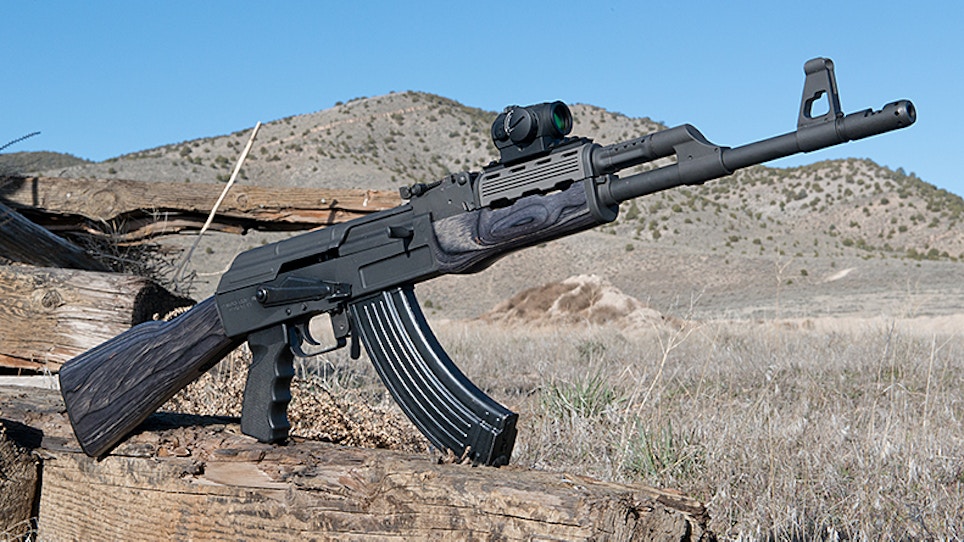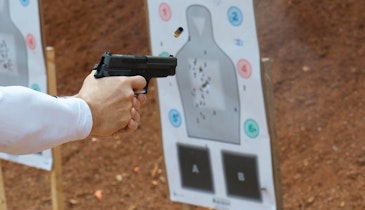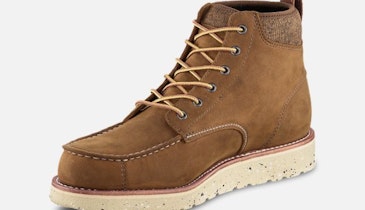Various government entities have tried to ban the AK-47 for decades now. It’s a familiar tactic perpetrated by many regulators. First you restrict imports to “sporting rifles,” then ban parts, then capitalize on political turmoil and ban certain imports outright. No single weapon system has seen a greater effort at a ban, with the possible exception of “assault rifles” in general.
Banning the import of Chinese weapons (including the AK variants) in 1993 did little but sell more rifles built elsewhere in the world. Like all these efforts, it served to make existing Chinese weapons more valuable.
Exactly the same thing has occurred with the recent ban on the import of Russian weapons. Already a pretty minimal part of the market, it has done nothing to lessen the weapon system’s popularity. As expected, it just made existing Russian rifles more valuable, and recent imports flew off the shelves at inflated prices.
The move has prompted many retailers to once again predict the demise of the AK as a viable retail product. But suffice it to say, its demise is greatly exaggerated.
Maybe the ban gets lifted; if so, it will be a first. Banning Chinese weapons import was purely political, and China is now one of our largest trading partners — yet no change in the ban. Given the Russian ban is completely political, it’s hard to see anything different occurring with the Russian models. So how did this affect the market, and should you continue to sell them?
The AK-47 Market
No single rifle has seen more change in its marketing and makeup, mostly due to concerted efforts by our government to ban it, than the AK platform. Each attempt to bar or ban yielded a countermove that kept it viable with a strong and growing following.
Early sales were limited to collectors and those unable to afford an AR. Retail prices under $300 made AKs an inexpensive alternative. Quality was spotty at best depending on the country of origin, but they were cheap.
Most were “truck guns” or used for target shooting and plinking. They were simple and rugged, and they worked. Accuracy ranged from marginal to abysmal, but ammunition was cheap. Quality control was nonexistent, with a few exceptions. But if you wanted a black rifle and didn’t have $700 to spend, the AK was a great choice.
Banning the import of complete guns in general, then de-milled receivers, prompted the manufacture of American-made receivers and a huge influx of parts kits. Generally culled from a foreign military’s inventory, or removed from de-milled guns, these kits were inexpensive at first.
Quality ranged from new to downright junk. Mostly used to rebuild existing foreign receivers, they were a pretty niche market. Early American receivers were ok but nothing to write home about. Using one meant the cost was close to an AR, so it remained a pretty slim retail market limited to specialists in the field.
Future bans on the importation of barrels and parts kits slowly changed the market completely. Coupled with an overall spike due mostly to politics, and assisted by strong marketing, an entirely new AK market emerged. American-made receivers were excellent. Demand prompted dozens of configurations, several companies making them, and more builders putting them together.
Complete U.S. builds were similarly priced to ARs. Build parties sprung up, allowing enthusiasts to share riveting machines and expertise. Custom builders were offering unheard-of feature sets and very high-quality builds. Accuracy improved, thereby introducing the AK to a new type of buyer. Training schools even started to sprout up focusing solely on the AK system.
Many, myself included, delighted in taking AK rifles to carbine classes and outshooting many AR guys. The AK was no longer the evil stepchild of the AR, and that is continuing today.
So What About The Ban?
Contrary to some of the media hype, President Obama’s ban on the import of Russian weapons has had little effect on the AK market as a whole — other than to drive up prices on Russian rifles.
Russian-built guns are great, but they comprise a very small percentage of the market. Collectors have always liked them, and when the difference in quality was substantial, they had some popularity.
That’s no longer the case, with many builds rivaling or surpassing Russian quality at much lower cost.
But for at least the last couple of decades, most AK buyers could not care less if they came from Russia. In general, most consumers are perfectly happy with builds on new American receivers or rebuilds of existing receivers from several other countries. Custom touches like left side charging, magazine funnels, better sighting systems and rails make the AK user-friendly and incredibly capable. Most will never be tack-driving target masters, but their overall build quality, accuracy and usability is exponentially better than it was in past years.
So What’s Out There?
Is the AK market going to catch up to the AR? Probably not. But there is some really good stuff out there. Having maintained an interest, even fielding a few early in my SWAT days, I’ve tested many rifles. Some are stock, many are custom using upgrades that enhance their usability as an urban rifle or carbine.
Century Arms continues to import the WASR-10, one of the most affordable on the market. Retail pricing at around $700 keeps them at the low end. But quality today is much improved over the WASR-10 of old. It’s a great place to start, and Century Arms typically has nice margins allowing for decent profit.
Century also makes an entirely American-made rifle using a billet receiver. The Centurion 39 line is very solid, nicely built and pretty accurate. Retail pricing at $800 or so makes it quite reasonable given the collectors value of many imported billet guns. It reaches a buyer that wants the solid feel of a billet receiver.
Century Arms also offers rifles like the Yugoslavian Zastava M76 — a designated marksman rifle released in the 1970s fulfilling the same basic role as a Soviet Dragunov SVD.
Unlike the SVD, the M76 is chambered in 8mm x57, and is really just a large AK-47-style rifle. It retains the same rotating bolt and bolt carrier, just longer and heavier. It uses a milled receiver that is upsized to work with the 8mm cartridge. The stock and pistol grip remain separate as opposed to the thumbhole stocks seen on the Dragunov, and it uses an AK-style gas piston that is attached to the bolt carrier.
Another feature specific to the M76 is the operator-adjustable gas regulator allowing for a bit of adjustment to suit different ammunition. It utilizes a 10-round magazine that is designed to hold the bolt open on the last round, similar to an M14 magazine.
Stepping up to some of the quality builds on U.S. receivers, the ARAK AK-74 is an excellent option. Built on a high quality Waffen Works receiver, it includes a side scope rail. Coupled with the chrome-lined barrel, Tapco G2 fire control group, and U.S.-made pistol grip, it is completely import-compliant. Expertly finished using KG Gunkote, it looks fantastic.
Plum furniture keeps it period, and it was very accurate, reliable and a blast to shoot. It is representative of a number of semi-custom builds priced right at or just under $1,000.
Another popular build practice today is to start with a pistol and add one of the pistol stocks (or arm braces), turning it into an SBR. Blackheart International created one of the early SBRs using a Draco pistol as a starting point. Imported as a complete pistol from Romania, there is no conversion here, and with the exception of the trigger, they are all Romanian.
Just add a stock and turn it into an SBR. Or lately, add one of the arm braces and keep it as a sort of pistol you can shoulder when necessary. It remains one of the least costly ways to get this done.
My Black Heart International SBR is one of the most accurate AK-style rifles I’ve ever used. At a Surefire Institute AK training it was nailing steel plates at 300 yards from kneeling, with nothing more than a red dot — plenty accurate, very compact and pretty reasonable to build.
Some Final Thoughts
There is and always has been a strong counter-culture that makes the AK rifle popular.
For some it is about cost, others nostalgia, and for some (like me) it is simple function and reliability. Purists want the rifle to be “period;” I just want it to work, period!
No rifle has done that better over the years with more consistency than the AK. Never shy to change things, my rifles often have additions that make them easier and more enjoyable to shoot. Ammunition is better, accessories are better and more available, and they’re often less expensive with solid margins.
Builders are warming up to it, and custom rifles are incredibly well done. Its only real hurdle remains politics, bias and perception. There’s no way to get around the fact that it’s a rifle often seen in the hands of our enemies, but attention to detail when stocking the AK can reach a market many gun shop owners ignore.
The AK is anything but dead — in fact it’s as or more popular than ever. And if history repeats itself, the Russian design will likely continue to sell for many years to come.






